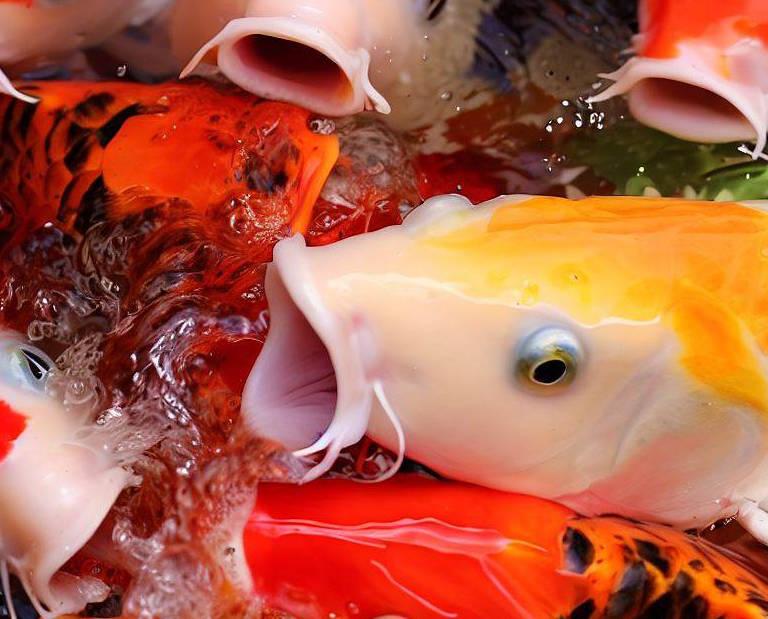Proper nutrition plays a vital role in maintaining the health, growth, and beauty of these magnificent creatures. When it comes to feeding koi, there are two main types of food available: floating and sinking. Each type offers unique benefits and considerations, allowing koi keepers to tailor their feeding practices to suit the specific needs of their cherished aquatic companions.
- Floating Koi Food: Engaging and Observational Feeding: Floating koi food, as the name suggests, remains buoyant on the water's surface. This type of food is designed to float for an extended period, allowing koi to swim to the surface and actively engage in feeding. Floating pellets or sticks are commonly used, formulated to provide a balanced and complete diet for koi.
The advantages of floating koi food are twofold. Firstly, it allows koi keepers to observe their fish closely during feeding, enabling them to monitor their health, behavior, and appetite. Additionally, floating food creates a stimulating feeding experience as the fish actively swim and compete for each morsel, replicating their natural foraging instincts. This interactive feeding process also helps prevent overfeeding, as uneaten food can be easily identified and removed from the pond.
- Sinking Koi Food: Dietary Variety and Nutritional Depth: Sinking koi food, as the name implies, quickly descends to the bottom of the pond, providing an alternative feeding option for koi. This type of food is specifically formulated to sink slowly, allowing koi at different depths to access their meals comfortably.
Sinking koi food offers several benefits for koi keepers. Firstly, it provides dietary variety by targeting different feeding zones within the pond, accommodating koi that prefer to feed near the bottom. This ensures that all koi, regardless of their preferred feeding level, receive proper nutrition. Additionally, sinking food can be beneficial for koi suffering from swim bladder issues or those with a tendency to gulp air at the water's surface.
- Choosing the Right Feeding Strategy: Deciding whether to use floating or sinking koi food depends on various factors, including the specific needs of your koi, the pond's design, and your personal preferences as a koi keeper.
For ponds with a bottom drain, floating food may be the ideal choice as it prevents clogging of the bottom drain and ensures efficient filtration. Floating food also promotes an active feeding environment, allowing you to observe your koi and assess their health and behavior regularly.
On the other hand, if your pond lacks a bottom drain or if you have koi that prefer to feed near the pond's bottom, sinking food may be more appropriate. This type of food ensures that all your koi receive adequate nutrition and prevents competition between fish at different feeding levels.
- Feeding Practices and Considerations: Regardless of the type of food you choose, establishing a consistent feeding routine is crucial. Overfeeding can lead to water quality issues and potentially harm the health of your koi. It is recommended to feed your koi small, frequent meals throughout the day, rather than one large feeding session. This approach allows for better digestion and prevents food waste.
Remember to adjust the quantity of food based on the temperature, as koi's metabolic rates fluctuate with changing weather conditions. During colder months, when koi are less active, reduce the feeding frequency and monitor their appetite closely.
Floating and sinking koi food offer koi keepers versatile options for nourishing their vibrant pond dwellers. Floating food engages koi in an interactive feeding experience, while sinking food caters to the nutritional needs of koi that prefer feeding near the bottom. By understanding the benefits and considerations of both feeding strategies, you can make informed choices that support the health, growth, and enjoyment of your beloved koi fish, ensuring they thrive in their watery abode.
